Commons:Wiki Loves Bangla 2024/Winners
| Home | Prizes | FAQ | Jury | Images | Winners | Organizers |

|
Wiki Loves Bangla 2024 |
Wiki Loves Bangla 2024 saw a total of 215 people contribute images from over 2,100 photos of Bengali food from all over the world. Hundreds of these photos are being used to help illustrate pages across various Wikimedia projects, including Wikipedia and Wikidata.
After several weeks and three rounds of judging by our judges, we are pleased to announce the winners of Wiki Loves Bangla 2024. These photos are recognized for their photographic quality, artistic merit, and their encyclopedic value as illustrations of Bengali cuisine.
We were impressed by many incredible submissions, and as always, it proves to be difficult to narrow it down to just ten winners. That being said - congratulations to the following winners of the contest and their amazing photographs! All ten will receive a prize and certificate.
Finally: Thank you to all participants, as well as to our judges, editors, and organizers who helped make this event possible.
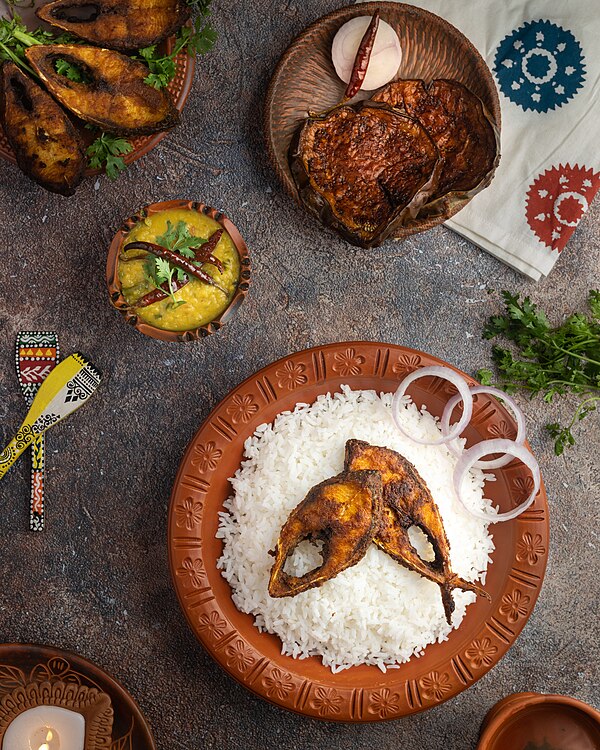
1st place
Photograph: Sohel
CC-BY-SA-4.0
Rice and ilish fry with Dal chachchori and eggplant fry is a unique combination of Bengali food habits. The proverb ‘Mache-Bhate Bangali’ (Bengali by fish and rice) encapsulates the core of Bengali cuisine, where fish and rice are considered staple foods and are deeply ingrained in the cultural and culinary heritage of Bengal.

2nd Place
Photograph: Munni Akter Mim
CC-BY-SA-4.0
Beef bhuna is a glorious Bengali curry, easily identified by its delicious, spicy and thick sauce. It is a popular dish in Indian cuisine too, particularly in the North Indian region. It is a spicy and flavorful preparation of beef cooked with aromatic spices, onions, tomatoes, and sometimes yoghurt or cream. ‘Bhuna’ refers to the cooking method where the meat is cooked in its juices until they are reduced and the flavours are intensified.
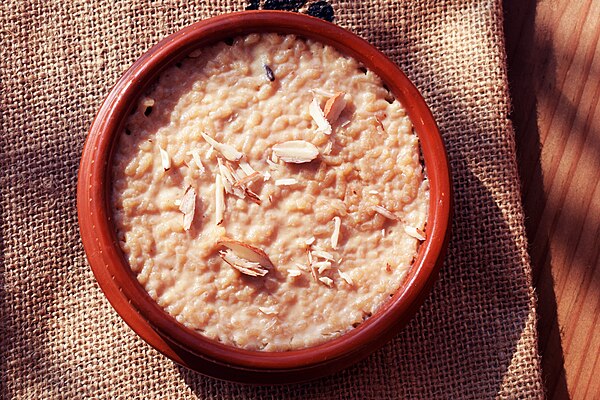
3rd Place
Photograph: Dolon Prova
CC-BY-SA-4.0
Payesh made with date jaggery is a traditional Bengali dessert known for its rich, creamy texture and sweet flavour. It is typically prepared by simmering rice in milk and sweetening it with date jaggery also known as ‘nolen gur’ (‘new jaggery’), which imparts a unique caramel-like taste. Traditionally cooked at night and eaten in the morning.
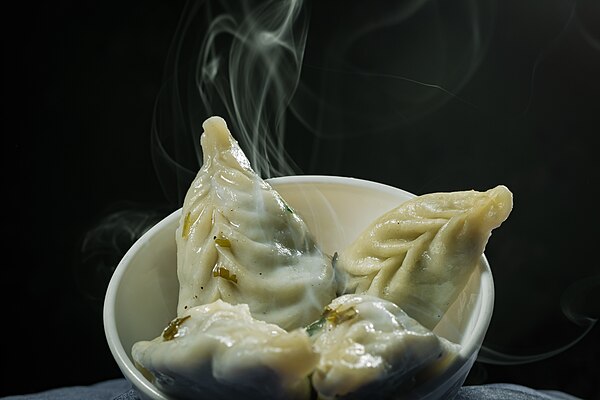
4th Place
Photograph: Tapas Kumer Halder
CC-BY-SA-4.0
Momos are a type of steamed-filled dumpling in Tibetan and Nepalese cuisine that is also popular in neighbouring Bhutan, India and Bangladesh. It is usually served with a sauce known as achar (South Asian pickle) influenced by the spices and herbs used within many South Asian cuisines. It can also be cooked as soup versions known as jhol momo.

5th place
Photograph: Srividya
CC-BY-SA-4.0
Traditional homemade Bhog Prasad. 'Bhog' refers to the offering made to deities in Hindu rituals and ceremonies, particularly during religious festivals and auspicious occasions. 'Prasad' refers to the consecrated food that is offered to the deity and then distributed to devotees as a blessing. Bhog Prasad is essentially the sacred food offered to the deity and later distributed among the devotees.

6th Place
Photograph: Tapas Kumer Halder
CC-BY-SA-4.0
Imarti (alternative names include Amitti, Amriti, Emarti, Omritti etc.) is indeed a popular Indian dessert believed to have originated in the Mughal kitchens. It is made from urad dal (black gram) batter, which is fried in a circular shape and then soaked in sugar syrup. Imarti has a distinctive spiral shape and is often adorned with saffron or rose water for added flavour and aroma.
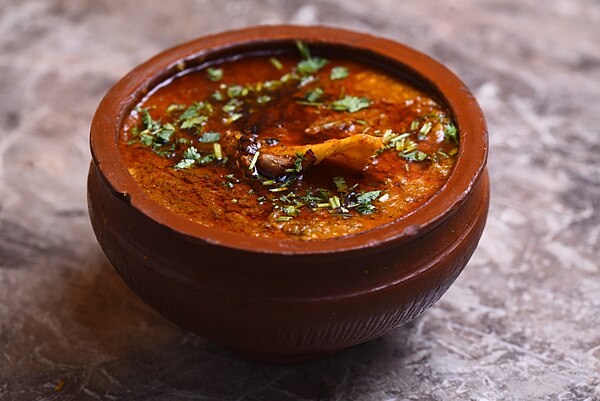
7th Place
Photograph: Munni Akter Mim
CC-BY-SA-4.0
Haleem is indeed a type of stew that is popular across Central and South Asia, and the Middle East. It is a hearty and nutritious dish made from a variety of ingredients, including meat (often mutton, beef or chicken), lentils, wheat, barley, and spices. Although the dish varies from region to region.

8th Place
Photograph: Munni Akter Mim
CC-BY-SA-4.0
Sooji halva, also known as Semolina halva, or rava kesari, is a popular and common sweet dish in Bengali cuisine. It is made from semolina, ghee (clarified butter), sugar, and water, along with nuts, raisins, and aromatic spices such as cardamom for flavour.

9th Place
Photograph: Dolon Prova
CC-BY-SA-4.0
Sweet flour pie, also known as ‘sweet flour pancake’, is a simple, delicious and very common snack in Bengali cuisine. It is made by mixing wheat flour, milk, and sugar, and is sometimes flavoured with cardamom or saffron. The mixture is then fried on a tawa (flat griddle) over low flame until golden brown and crispy on the edges.
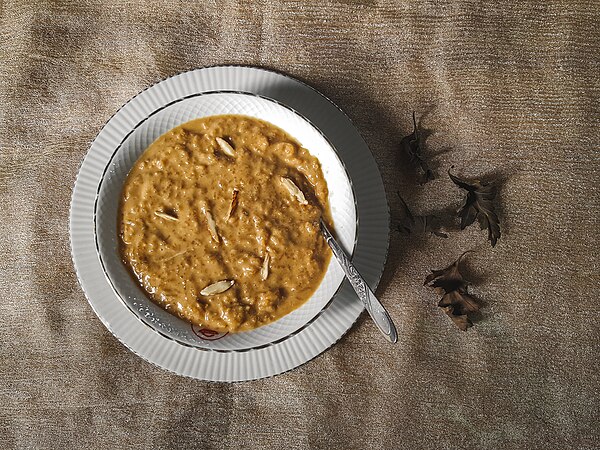
10th Place
Photograph: Tasin I. Arnob
CC-BY-SA-4.0
Payesh made with date jaggery, is a wonderful variation that adds a rich, caramel-like sweetness to the dish. Cooked at night and eaten in the morning, these Payesh coagulate beautifully like curd.
Special Mention
Sadikul Islam is the highest image uploader, where he contributed a total of 163 images within the contest scope.